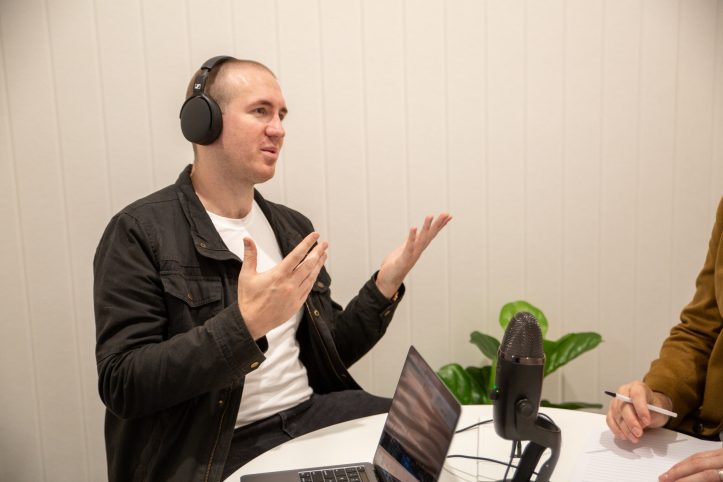| What area(s) of law does this episode consider? | Regulatory investigations; including the powers available to investigators, how to respond when a regulator makes first contact, and how to best engage throughout the investigation. |
| Why is this topic relevant? | Dealing with regulators is a key skill for any Australian lawyer. From the Australian Competition & Consumer Commission (ACCC) to the Australian Taxation Office (ATO) and the Therapeutic Goods Administration (TGA), Commonwealth regulators play an almost daily part in the practices of many lawyers. These agencies monitor, investigate, and enforce compliance with relevant legislation and regulations. But the process of investigation and the powers available to regulators can be a bit of a mystery. This episode uses examples from the work of the TGA to demonstrate the powers available to a Commonwealth regulator and to illustrate how best (and how not) to respond to an investigation. |
| What legislation is considered in this episode? | Therapeutic Goods Act 1990 (Cth) (TG Act) Evidence Act 1995 (Cth) (EA 1995) Poisons Standard June 2022 (Cth) (Poisons Standard) |
| What cases are considered in this episode? | Australian Competition and Consumer Commission v Lorna Jane Pty Ltd [2021] FCA 852- In 2020, fashion brand Lorna Jane started advertising a line of activewear which was alleged to eliminate pathogens (including COVID-19) on contact. The ACCC launched and won a Federal Court action for false and misleading advertising. The Court ordered Lorna Jane to pay $5 million in penalties.
Secretary, Department of Health v Oxymed Australia Pty Ltd & Malcom Hooper [2021] FCA 1518 (Jade link) - Oxymed advertised devices intended to administer hyperbaric oxygen therapy for therapeutic purposes.The Court injuncted Oxymed and Mr Hooper from advertising such devices with any reference to purported therapeutic purposes. Oxymed was ordered to pay $2 million in penalties, with Mr Hooper also ordered to pay $1 million.
Secretary, Department of Health v Evolution Supplements Australia Pty Ltd (No 2) [2021] FCA 872 (AUSTLII link) - Evolution Supplements sold sports supplements that contained substances included in schedule 10 to the Poisons Standard. Mr Keskin, the sole director of Evolution Supplements, did not reply to a routine warning sent to him by the TGA. Evolution Supplements then received a cease and desist letter and then finally a statutory direction to cease advertising the harmful products. As no response or action was taken, the TGA sought an injunction and brought proceedings. In the result, the Court issued a penalty of over $10 million for the company and $1 million for Mr. Keskin.
|
| What are the main points? | - The TGA regulates all products that make a “therapeutic use claim”, that is, they are promoted as being used in the treatment or prevention of a medical illness or disease.
- Nicotine vaping products are within the TGA’s remit as they claim to be a quit smoking aid. The long-term health risks of nicotine vaping products is still unclear and evidence of their potential efficacy for smoking cessation is mixed.
- The two main ways the TGA obtains information to inform their decision to commence an investigation and dictates which approach is taken are (i) reports from members of the public, other government agencies or internally within the TGA, (ii) or through the TGA’s own intelligence gathering.
- To gather evidence, the TGA will take screen captures from a purported contravening website, they may issue statutory notices to seek the voluntary provision of information and they may also execute a warrant and search the contravening premises.
- The standard required to commence an investigation, reasonable suspicion, is a lower standard than the balance of probabilities as the evidence does not need to prove that infringement is more likely than not. Instead, reasonable suspicion is where, knowing what you know, infringement is a possible or valid explanation.
|
| What are the practical takeaways? | - Regulators like the TGA are not there to provide legal or regulatory advice on first contact, however, dealing openly with an investigator by phone can be an impactful step for purported contravenors.
- Regulators have compliance priorities which are used to assess whether intelligence or a report is worth investigating. However, if something doesn’t fall within a compliance priority it does not mean that something will not be investigated.
- For lawyers gathering evidence by screen capture, have a usual process and note where and when you depart from it in the course of your work. This way, if cross-examined on the issue, you can clearly state I did or did not follow my usual process.
|
| How to: | How to ensure screen captures will be effective as evidence- Ensure the capture is complete. Make sure it is not a snippet and that it has not glitched. It should represent the entirety of the screen.
- Include all relevant information. The capture should include information as to when it was captured, what was captured (the URL), and who captured it.
- Have a consistent method and follow it. Follow a usual process, if you deviate from this method, take a note of how you departed.
- If possible, take a video capture. If you wish to show how web pages link together, you should take a video capture.
- Lock it down. Save the file in a way so it can’t be edited in its final form. This prevents allegations that a capture has been edited.
For further details on these tips, listen to Tristan’s episode from 57:25. |
| Show notes: | National Drug Strategy Household Survey 2019 |
